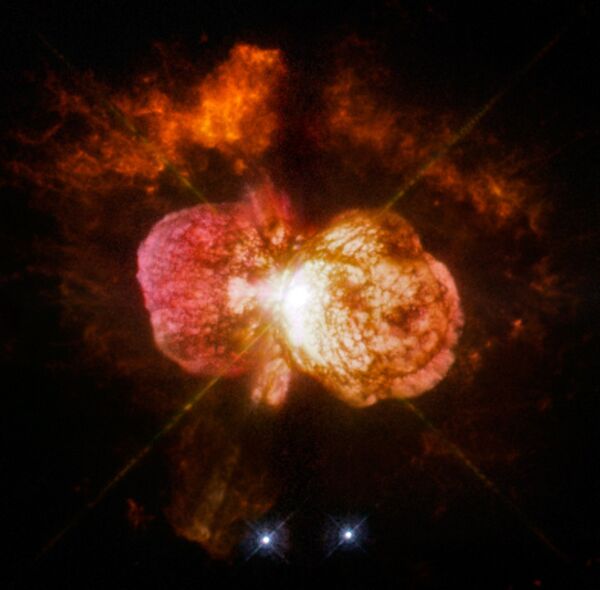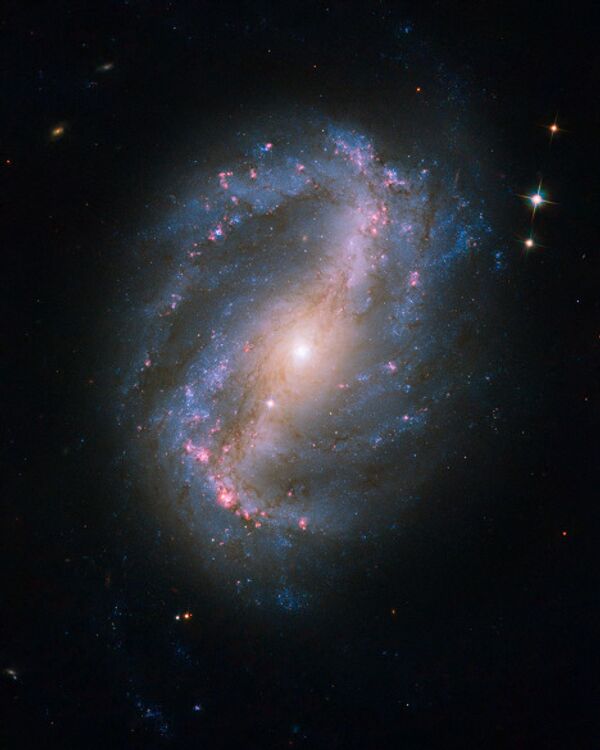
1/10
© NASA
The U.S. National Aeronautics and Space Administration (NASA) and the European Space Agency (ESA) have published the first photographs taken by the Hubble Space Telescope after its fourth servicing mission, which was completed in May by astronauts from the space shuttle Atlantis. Photo: The Large Magellanic Cloud, a dwarf galaxy.

2/10
© NASA
“This marks a new beginning for Hubble,” said Ed Weiler, associate administrator for NASA's Science Mission Directorate at NASA Headquarters. “The telescope was given an extreme makeover and is now significantly more powerful than ever”.

3/10
© NASA
Scientists say that the data obtained from the photographs show that the observatory is ready for a new decade of service in space. Photo: The region around Omega Centauri.

4/10
© NASA
During the servicing mission, astronauts installed two new instruments: the Wide Field Camera 3 (WFC3) and Cosmic Origins Spectrograph (COS). They also repaired two others, the Advanced Camera for Surveys (ACS) and Space Telescope Imaging Spectrograph (STIS). Another instrument, the Near Infrared Camera and Multi-Object Spectrometer (NICMOS), will be brought back into operation after calibration and testing. Scientists tested and calibrated the new and upgraded equipment over a period of three months. Photo: Jupiter.

5/10
© NASA
The series of photos published by the astronomers includes color photographs of “emissions” from galaxies, dense star clusters, and butterfly-shaped clouds of gas and dust. The new equipment has significantly extended the reach of the telescope. Photo: The star Eta Carinae.

6/10
© NASA
Now the telescope can “see” the universe in a very wide range of frequencies, from the ultraviolet to the near infrared region of the electromagnetic spectrum. Photo: Stars from the Omega Centauri star cluster.

7/10
© NASA
Scientists plan to use the Hubble to study a wide range of phenomena, including the so-called Kuiper Belt, the region beyond the orbit of Pluto that is full of ice asteroids and dwarf planets, and distant galaxies. Photo: A stream in the Carina Nebula.

8/10
© NASA
In particular, astronomers hope to create a near-infrared “portrait” of the universe. Photo: A butterfly-shaped cloud formed as the result of the death of a star – the planetary nebula NGC 6302.

9/10
© NASA
Scientists also hope to make observations that would help solve the riddle of “dark energy.” Photo: The Stephan’s Quintet group of galaxies, located in the Pegasus constellation.

10/10
© NASA
The Hubble Space Telescope, named after American astronomer Edwin Hubble, has been in orbit since 1990. It is a joint NASA-ESA project. European astronomers are allowed to use 15% of observation time for their own projects. Because of the considerable expense of servicing the telescope, U.S. officials discussed discontinuing its operation after 2013, but reconsidered after significant public outcry. Photo: Barred spiral galaxy NGC 6217.



